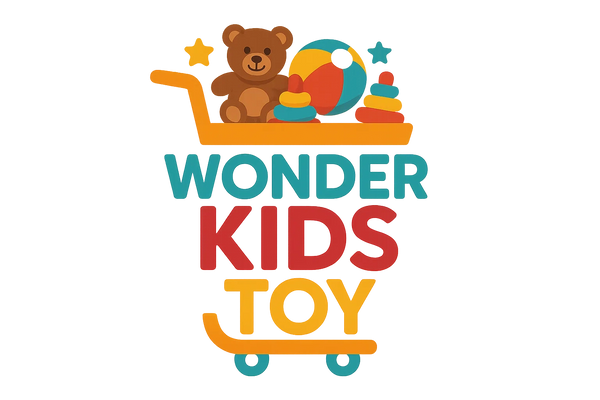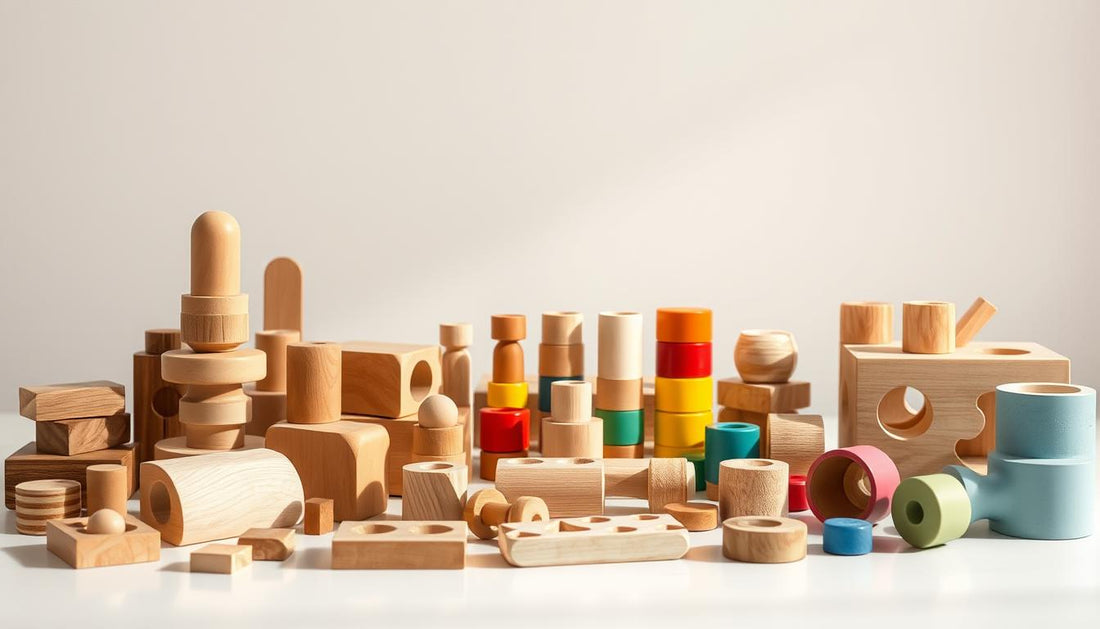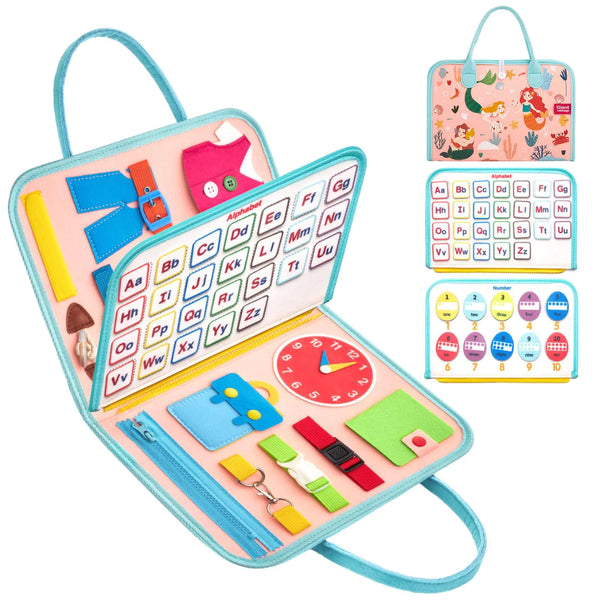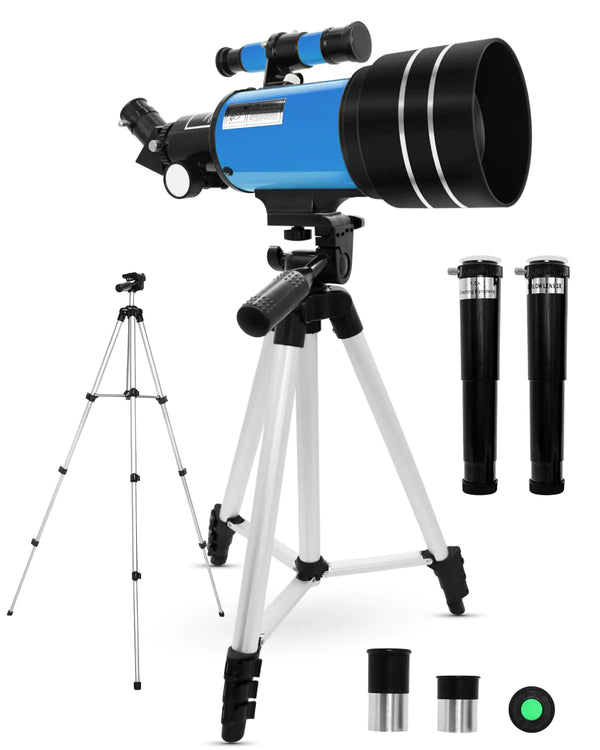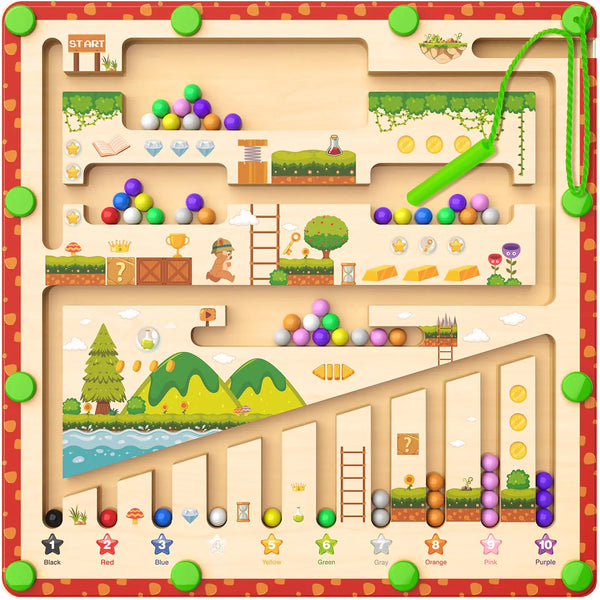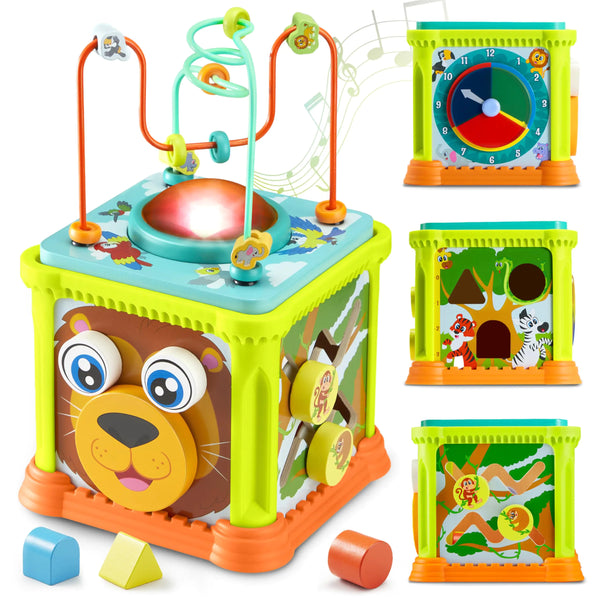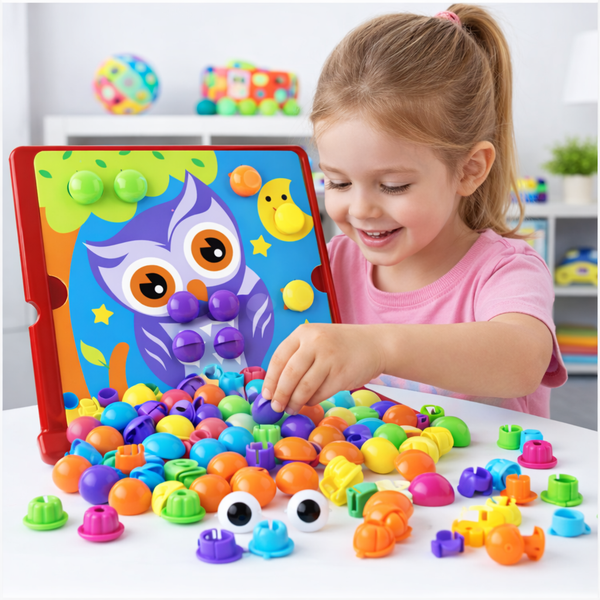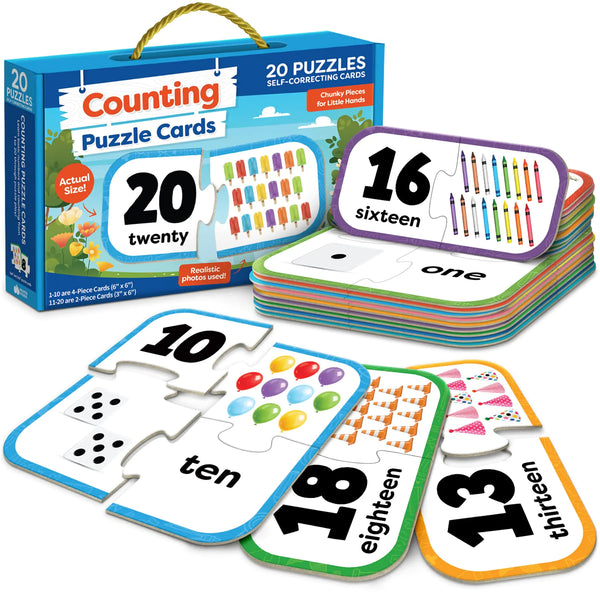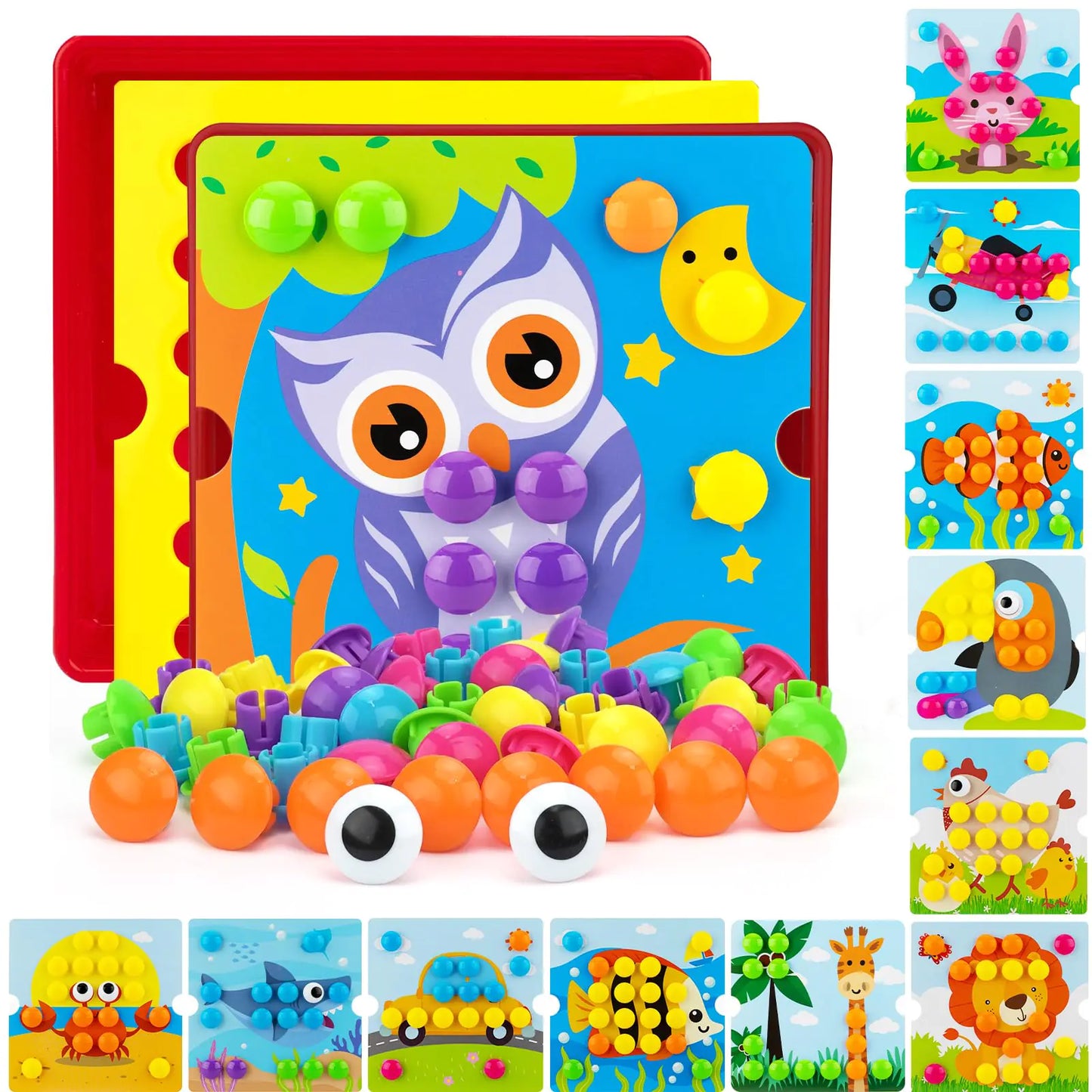As a mom, I always search for safe, fun, and green options for my child. I've grown to love Montessori-inspired toys. They're more than just toys; they help my child grow while protecting our planet.
Educational toys are key to a child's growth. They encourage independence, creativity, and solving problems. When picking toys, I look for ones that are good for the planet and safe for my child. I want them to be made from materials that are kind to our environment and free from harmful chemicals.
Key Takeaways
- Montessori-inspired toys promote sustainable and safe play.
- Educational toys are vital for a child's brain development.
- Choosing eco-friendly toys is key to our planet.
- Safety and sustainability are my top concerns when picking toys.
- Montessori toys help kids become independent and creative.
Understanding the Montessori Method and Its Benefits
For parents wanting to help their kids learn on their own, the Montessori method is key. Dr. Maria Montessori created it. It focuses on learning that's centered on the child, hands-on, and through play.
What is the Montessori Approach?
The Montessori way is all about independence, creativity, and mind development. Kids can learn at their own pace. They use Montessori materials to really get concepts.
It also teaches practical skills. Kids learn to cook, clean, and care for their space. This builds a strong base for school success.
Key Principles of Montessori Learning
The Montessori method has some key points. These make it a great way to learn:
- Self-Directed Learning: Kids learn on their own, choosing what they want to know.
- Hands-On Activity: Montessori learning toys and materials help kids learn through touch and exploration.
- Collaborative Play: Kids work together, share ideas, and learn from each other.
Let's look at how Montessori compares to traditional learning:
| Aspect | Traditional Learning | Montessori Learning |
|---|---|---|
| Learning Approach | Teacher-led instruction | Self-directed learning |
| Materials Used | Textbooks and worksheets | Montessori materials and hands-on activities |
| Focus | Rote memorization | Practical application and understanding |
Using the Montessori method helps kids grow developmentally. It prepares them for the future.
The Importance of Safety in Montessori Toys

Keeping Montessori toys safe is key. It fits with the Montessori method's focus on natural materials and child growth. As a parent, I make sure the toys I pick are both educational and safe.
Material Safety Standards
Montessori toys must meet strict safety standards. They should be made from non-toxic materials and last a long time. Wooden toys are great because they're eco-friendly and safe. They're made from natural wood, free of harmful chemicals.
When picking Montessori toys, look for safety certifications. These marks show the toy has passed safety tests. The specific certifications can depend on where you are.
Avoiding Toxic Chemicals
Many plastic toys contain harmful chemicals such as BPA and phthalates. These can harm a child's health. Eco-friendly toys, like those made from wood, bamboo, and organic cotton, are safe for children. As a parent, it's essential to avoid toys with these chemicals.
- Choose toys made from natural, non-toxic materials.
- Opt for toys with certifications that indicate safety compliance.
- Avoid toys with small parts that can be a choking hazard.
The Role of Age Appropriateness
Age is a significant factor in toy safety, as toys for a particular age group are made with that age in mind. For example, toddler toys are bigger and more durable to prevent choking.
Knowing my child's age helps me pick safe and fun toys. Montessori toys are made to help kids learn and grow. When they fit the child's age, they make learning even better.
Characteristics of Sustainable Montessori Toys

Sustainable Montessori toys are made from natural materials and eco-friendly processes. This makes them better for the environment and healthier for kids. I look for toys that are both educational and environmentally friendly.
Natural Materials vs. Plastics
Sustainable Montessori toys use natural materials. Companies like Melissa & Doug and Bumbu Toys lead the way. They use wood and plant-based materials that are tough and good for kids' hands.
On the other hand, many toys are made from plastic with harmful chemicals. Sustainable toys often skip plastics or use recycled ones. This reduces waste and lowers carbon emissions.
Eco-Friendly Manufacturing Processes
How toys are made is also key. Sustainable toys are made with methods that waste less and use less energy. Some companies even use green energy in their factories.
Choosing toys made this way supports companies that care about the planet. It teaches my kids about the value of being green. It's a way to show them that we can all help the environment.
When I buy Montessori toys, I look for eco-friendly labels. This ensures the toys are fun, teachable, and kind to our planet.
Researching Brands for Montessori Toys

Choosing Montessori toys from trusted brands is key. It mixes fun with learning and is suitable for the planet. As a parent, it's important to choose toys that are safe, durable, and aligned with Montessori teaching methods.
Trusted Sources for Information
Looking for Montessori toy brands? Check out these trusted sources:
- Montessori training groups and schools
- Parenting forums and online groups focused on Montessori
- Reviews from other parents and teachers who use Montessori toys
For example, Sarah told me about her love for Montessori toys made from recycled stuff. She said, “I love that my son’s Montessori toys are made from recycled materials. It feels good knowing I’m choosing something sustainable for him.” This made me think about the planet's health when making choices.
Reading Reviews and Testimonials
Reviews and testimonials from others are super helpful. Look for feedback on:
- The toys' durability and safety
- How well they match Montessori's teachings
- The toys' educational value and how they help kids grow
By doing thorough research and listening to others, you can choose the best Montessori toy brands. This ensures your child gets top-notch, educational toys. It also shows you care about the planet and your child's safety.
Key Takeaways:
- Check out trusted sources like Montessori groups and parenting forums.
- Look for reviews that talk about durability, safety, and learning value.
- Think about the toys' impact on the environment.
Selecting Age-Appropriate Montessori Toys

As a parent, picking the right Montessori toys is key to my child's growth. These toys are made to help at different stages, from babyhood to preschool.
Growth Stages and Development
Children go through various stages, each with its own needs. For babies (0-12 months), sensory experiences and moving around are essential. Good picks include wooden rattles and toys that babies can easily hold.
When kids become toddlers (1-3 years), they start to explore more. Toddler toys that help them walk, stack, and nest are perfect for this time.
Recommendations by Age Group
For toddlers, developmental toys like wooden blocks and shape sorters are both fun and educational. They help solve problems and improve hand-eye coordination.
- For infants (0-12 months): Wooden rattles, sensory balls, and soft books.
- For toddlers (1-3 years): Stacking toys, shape sorters, and push-pull toys.
- For preschoolers (3-5 years): Complex puzzles, art supplies, and science kits.
By picking the right Montessori learning toys for my child's age and stage, I help them learn and grow.
Balancing Toy Variety and Educational Value

Finding the right balance between fun and learning is key in choosing Montessori toys. As a parent, I look for toys that entertain and teach my child. This way, they learn while having fun.
Montessori toys help kids learn through play. They improve fine-motor, gross-motor, and hand-eye coordination skills. These open-ended toys also boost creativity and imagination. They let kids explore and learn at their own pace.
Multi-Use Toys for Different Skills
Montessori toys are great because they can be used in many ways. For example, a simple wooden block can help with stacking, counting, and geometry. It's a perfect example of a multi-use toy.
| Toy Type | Skills Developed | Age Group |
|---|---|---|
| Wooden Blocks | Fine Motor, Problem-Solving | 2-5 years |
| Sensory Mats | Sensory Awareness, Exploration | 1-3 years |
| Puzzles | Problem-Solving, Critical Thinking | 3-6 years |
Integrating Play with Learning
Montessori toys make learning fun and engaging. By adding educational toys to playtime, kids develop essential skills. They have fun while learning.
Exploring Montessori toys, I'm amazed by their focus on Montessori materials that last and are suitable for the planet. This benefits the child and helps us live more sustainably.
Involving My Family in the Toy Selection Process

Getting my kids involved in picking out Montessori toys makes learning fun. It's not just about picking toys; it's about teaching them to make choices and take responsibility.
Discussing Choices with My Kids
Talking about toys with my kids is key. It helps them see why we choose certain toys. We talk about why some materials are better, like sustainable toys.
This talk teaches them about eco-friendly choices. It also makes them feel part of the decision-making. Seeing them choose Montessori-inspired toys that teach them something new is amazing.
Creating a Shared Wish List
Having a wish list together is a great idea. We all pick out Toddler toys and Montessori toys we like. This list helps us choose wisely and makes sure toys match their needs.
Getting everyone involved makes picking toys fun and collaborative. It's about making wise choices that help them grow.
Setting a Budget for Montessori Toys

Setting a budget for Montessori toys is key to picking quality educational items. It's essential to think about what your child needs now and what they'll need in the future. This way, you make a wise choice for their learning journey.
Prioritizing Quality over Quantity
Buying Montessori toys is more than just shopping. It's about giving your child tools for growth and learning. Quality Montessori toys are made to last, teach, and keep your child safe. They're a wise investment for your child's future.
Think about how long a toy will last and how versatile it is. For example, a sturdy wooden puzzle can last for years, teaching your child many things. But a cheap, plastic toy might not last long and could be thrown away quickly.
| Toy Type | Material | Educational Value | Durability |
|---|---|---|---|
| Wooden Blocks | Natural Wood | High | High |
| Plastic Puzzles | Plastic | Medium | Low |
| Montessori Sensorial Materials | Natural Wood and Fabric | High | High |
Sustainable Purchasing Practices
Choosing sustainable toys is good for the planet and makes your investment worth more. Opting for toys made from natural materials helps support green forestry and manufacturing. This choice is better for our planet.
Also, eco-friendly Montessori toys are made to last, which means you won't need to buy new ones often. This reduces waste and fits well with the Montessori idea of a clean, organized space that encourages learning.
By focusing on quality and sustainability, you help your child grow in a supportive environment. You also help make the world a greener place for the future.
Where to Buy Montessori Toys

Choosing where to buy Montessori toys can be tough. But there are a few key things to think about.
Parents can buy Montessori toys from local stores or online. Local stores let you touch and see the toys first. Online stores have more choices and reviews to help you decide.
Local Stores vs. Online Retailers
Buying locally helps your community and offers a personal touch. You can find Montessori toys at specialty stores. Shopping online, like on Amazon, is convenient and often cheaper. Some online stores focus on Montessori and eco-friendly toys.
For example, Amazon has great Montessori toys from brands like Melissa & Doug. Bumbu Toys also offers natural wood and recycled toys online.
Supporting Small Businesses
Buying from small businesses is also essential. They help the local economy and offer unique products. Many small businesses make sustainable Montessori toys that fit Montessori values.
- Find local artisans or small toy makers in your area.
- Check Etsy for handmade or sustainable Montessori toys.
- Shop directly from small businesses' websites known for Montessori materials.
By carefully choosing where to buy Montessori toys, you get great toys for your child. You also support businesses that share your values.
Evaluating the Longevity of Montessori Toys

When picking Montessori toys, I think about how long they'll last. I want them to be family treasures for years to come. Choosing toys that grow with your child means they'll be meaningful today and valuable tomorrow.
Toys as Heirlooms
Montessori toys are built to last, making them perfect for keeping in the family. I look for toys made from natural materials that can stand the test of time. They should also keep up with my child's growth.
These toys are more than just playthings. Their investments in my child's education are meant to last through generations. Their lasting appeal comes from their simplicity and the endless play they inspire.
Resale and Sustainability Factors
I also think about the resale value and sustainability of Montessori toys. Toys made from eco-friendly materials and built to last can be sold or passed down. This reduces waste and supports green living.
By picking toys that are both educational and eco-friendly, I teach my kids about reducing, reusing, and recycling. This helps them grow up with a love for the environment and a commitment to a healthier planet.
In the end, the lasting quality of Montessori toys shows in their construction, materials, and adaptability. By focusing on these, I make choices that benefit my family and the planet.
Tips for Maintaining Montessori Toys

Keeping Montessori toys in top shape is key. It makes them last longer and keeps their learning value high. As a parent, it's my duty to ensure these toys remain in excellent condition.
Cleaning and Care Guidelines
For wooden toys and other Montessori items, proper cleaning is vital. A damp cloth works well for wooden toys. But, never soak them in water or use harsh chemicals that could harm the wood or finish.
For toys like fabric or cardboard, gentle cleaning is best. Use a soft-bristle brush on fabric toys to remove dust. Cardboard toys can be cleaned with a dry cloth.
Repairing vs. Replacing Toys
When a Montessori toy gets damaged, fixing it might be a better option than buying a new one. For example, a wooden toy with a loose joint can be fixed with non-toxic glue.
But if a toy can't be fixed, it's better to get a new one made from sustainable materials. This way, my child gets to enjoy quality educational toys while helping the environment.
| Toy Material | Cleaning Method | Repair/Replacement |
|---|---|---|
| Wood | Damp cloth, avoid harsh chemicals | Repair with non-toxic glue |
| Fabric | Soft-bristled brush, gentle vacuuming | Replace if heavily soiled |
| Cardboard | Dry cloth, avoid moisture | Replace if torn or damaged |
My Personal Favorites in Montessori Toys

I've found some Montessori toys that I really like. They help with creativity, imagination, and staying active. These toys are a big part of our daily play and help my child grow.
Top Picks for Creativity and Imagination
Our home has toys that boost creativity and imagination. A wooden stacking set is one of my favorites. It's also a building block set. My son loves trying to balance and sort the pieces.
Another favorite is a set of wooden dolls and accessories. They let my child play out stories and scenarios. These simple dolls encourage creativity without any set roles or outcomes.
Toys that Encourage Physical Activity
Physical activity is key for kids, and some Montessori toys can support this. A balance bike is great for learning balance and coordination. It's an investment toy that helps kids move on pedal bikes.
Another favorite is a set of climbing blocks or a mini rock wall. They're fun and help build strength, coordination, and problem-solving skills. They work well indoors or outdoors, being both versatile and durable.
| Toy | Age Group | Benefits |
|---|---|---|
| Wooden Stacking Set | 2-5 years | Enhances problem-solving, creativity, and fine motor skills |
| Wooden Dolls and Accessories | 3-6 years | Fosters imaginative play, role-playing, and social skills |
| Balance Bike | 2-4 years | Develops balance, coordination, and gross motor skills |
| Climbing Blocks/Mini Rock Wall | 3-7 years | Promotes physical strength, coordination, and problem-solving |
Reflecting on Our Montessori Journey
Looking back, choosing Montessori-inspired toys for my family was a big decision. These Developmental toys have made a massive difference in my kids' lives. They've sparked their imagination and improved their motor skills.
Celebrating Progress
Watching my child grow through play has been amazing. Montessori toys have helped with their thinking, social skills, and feelings. These toys bring joy and help them grow healthily.
A Lasting Legacy
Quality time with these toys has made a lasting impact. I see how Montessori toys help my kids learn and solve problems. I'm sure the lessons from play will stay with them for many years.
FAQ
What are Montessori toys, and how do they differ from traditional toys?
Montessori toys help kids learn on their own, through hands-on activities and play with others. They focus on learning, social skills, and feelings. Unlike regular toys, Montessori ones are made from natural materials, have a learning goal, and let kids learn by themselves.
Why is safety important when choosing Montessori toys?
Safety is crucial because kids often put things in their mouths and play with their hands. Toys should be safe, made from non-toxic stuff, and have no small parts. This keeps kids safe from harm.
What are the benefits of choosing wooden Montessori toys over plastic ones?
Wooden toys are better because they're natural, last longer, and look nicer. They're safer too, without harmful chemicals like BPA or phthalates found in some plastics.
How do I research Montessori toy brands to ensure they are sustainable and safe?
Look into how brands make their toys, what materials they use, and if they care about the planet. Please read what others say, check for green certifications like FSC, and see whether the brand is open about how it makes things.
What are some tips for selecting age-appropriate Montessori toys for my child?
Pick toys based on your child's age and what they need to learn. For babies, toys that feel and sound good are great. Toddlers need toys that help them move and learn, like stacking. Preschoolers should have toys that help them solve problems and learn new things.
How can I involve my family in the toy selection process?
Talk to your kids about what toys they like, and make a list together. This makes choosing toys fun for them and teaches them about making choices and being responsible.
What are some sustainable purchasing practices for Montessori toys?
Buy second-hand toys, choose ones made from natural stuff, and pick brands that are good for the planet. It's better to have a few good, long-lasting toys than many cheap ones.
Where can I buy Montessori toys, and what are the benefits of shopping locally?
You can find Montessori toys at local stores, online, or from makers. Buying local helps small shops and lets you see the toys in person. Online stores have more choices and reviews to help you decide.
How can I maintain and extend the life of my child's Montessori toys?
Clean toys as the maker says, store them right, and teach your child to be gentle. Wooden toys might need oil now and then. Fixing toys instead of throwing them away can make them last longer.
How do I assess my child's growth and development through their play with Montessori toys?
Watch how your child plays with toys, see if they solve problems, and do things by themselves. Check if they learn new things. Changing toys and activities as they grow helps them keep learning.

